Method of formation of solution is given in Column I. Match it with the type of solution given in Column II.

The correct Answer is:A.→(2) B.→(3) C.→(4) D.→(1)
A. When sulphur vapours passed through cold water it leads to formation of molecular colloids.
B. When soap is mixed with water above critical micelle concentration it lead to formation of associated colloids.
C. White of egg whipped with water is an example of mocromolecular colloids in which high molecular mass proteneous molecule acts as a colloidal particle.
D. Soap mised with water below critical micelle concentration is known as normal electrolyte solution.
Topper's Solved these Questions
- BOOK - NCERT EXEMPLAR ENGLISHCHAPTER - SURFACE CHEMISTRYEXERCISE - Assertion and Reason5videos
SURFACE CHEMISTRY
- BOOK - NCERT EXEMPLAR ENGLISHCHAPTER - SURFACE CHEMISTRYEXERCISE - Long Answer Type Questions4videos
SURFACE CHEMISTRY
- BOOK - NCERT EXEMPLAR ENGLISHCHAPTER - SURFACE CHEMISTRYEXERCISE - Short Answer Type Qrestions29videos
SURFACE CHEMISTRY
- BOOK - NCERT EXEMPLAR ENGLISHCHAPTER - SOLUTIONS EXERCISE - LONG ANSWER TYPE QUESTIONS8videos
SOLUTIONS
Similar Questions
Match the reactions given in Column I with the type of reactions given in Column II
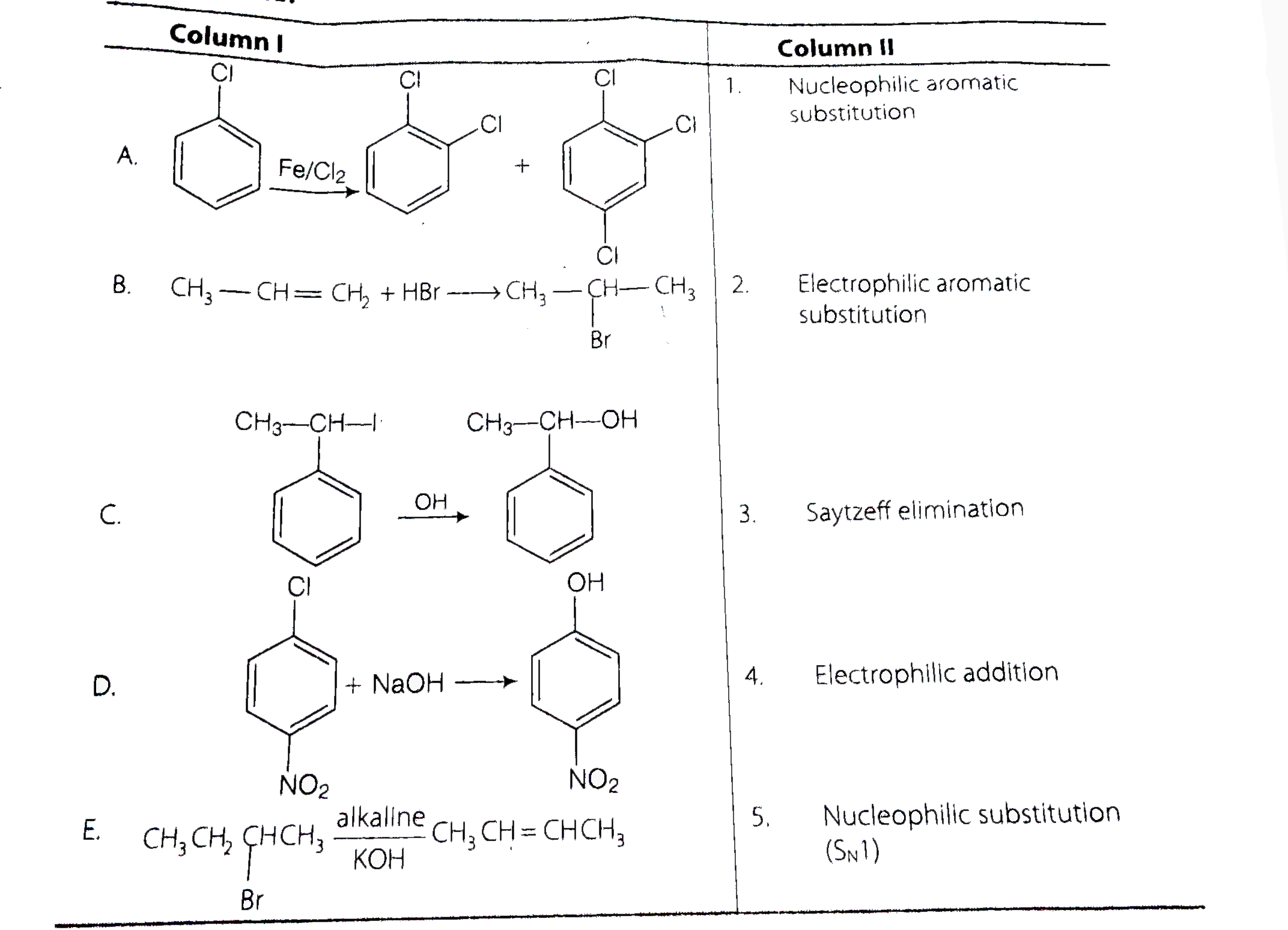 View Solution
View SolutionMatch structures given in Column I with the type of detergents given in Column II.
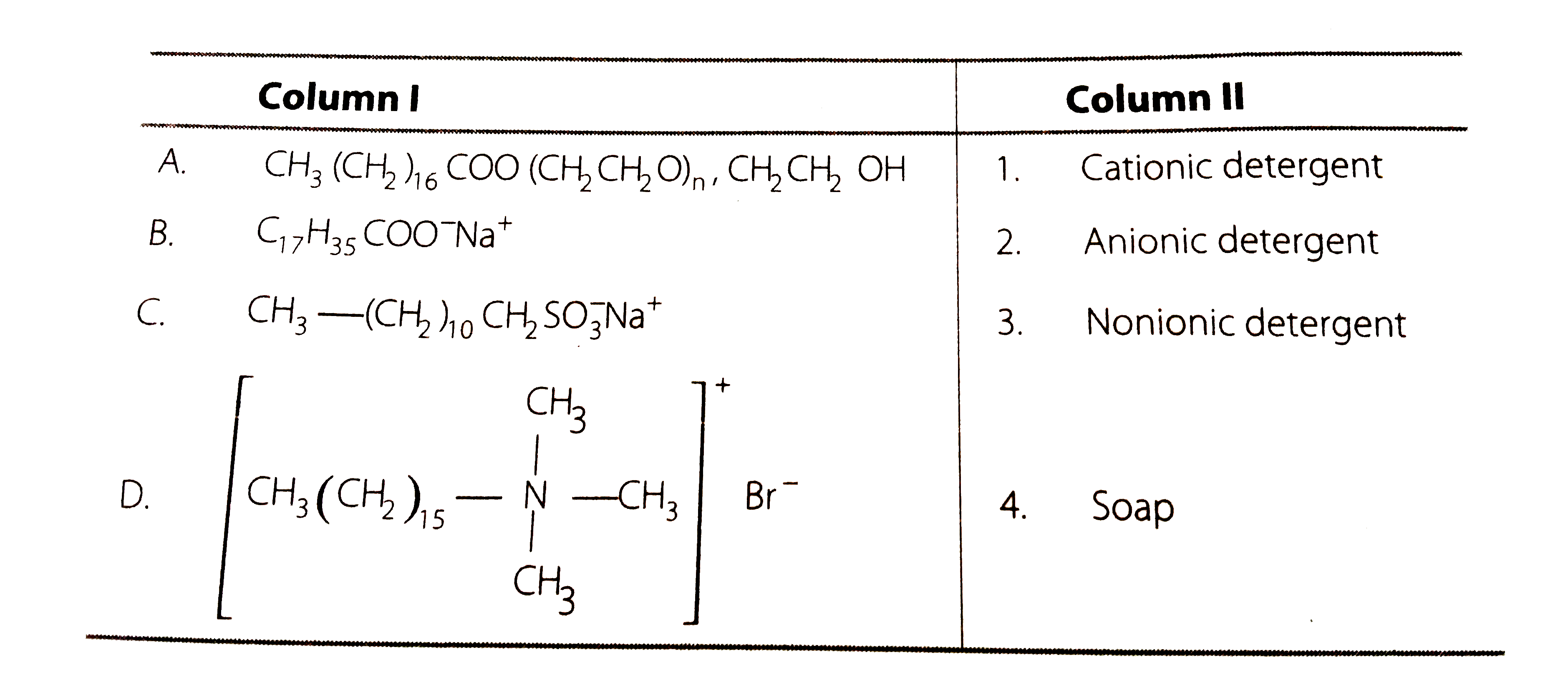 View Solution
View SolutionMatch the activity given in Column I with the type of pollution created by it given in Column II.
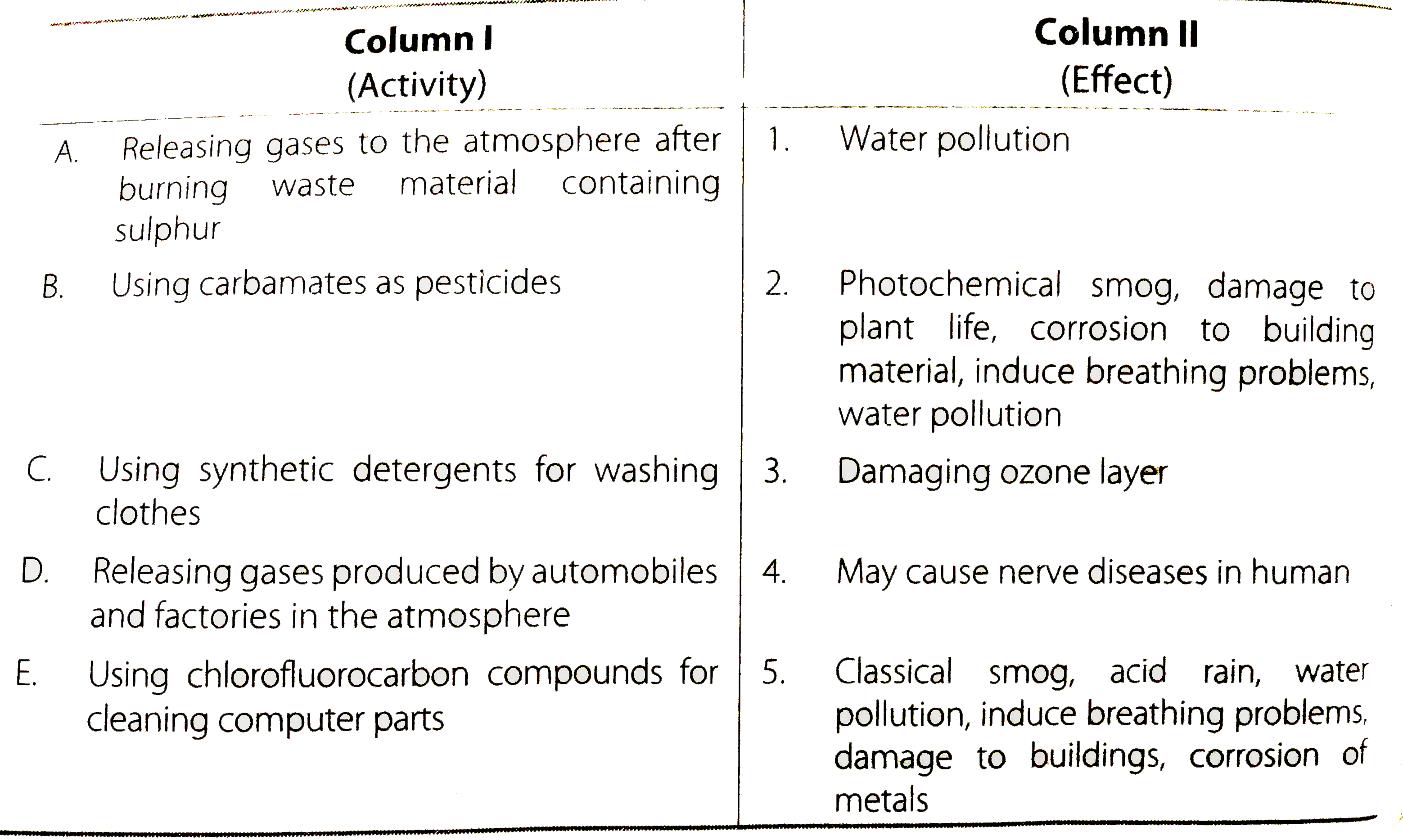 View Solution
View SolutionMatch the statement given in Column I with the phenomenon given in Column II.
 View Solution
View SolutionMatch the salts given in Column I with their . method of preparation given in Column II :
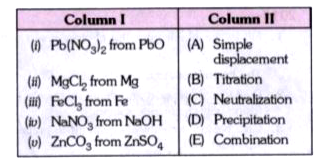 View Solution
View SolutionMatch the reactions given in Column I with the statements given in Column II
 View Solution
View SolutionMatch the reactions given in Column I with the statements given in Column II
 View Solution
View SolutionMatch species given in column I with the electronic configuration given in column II.
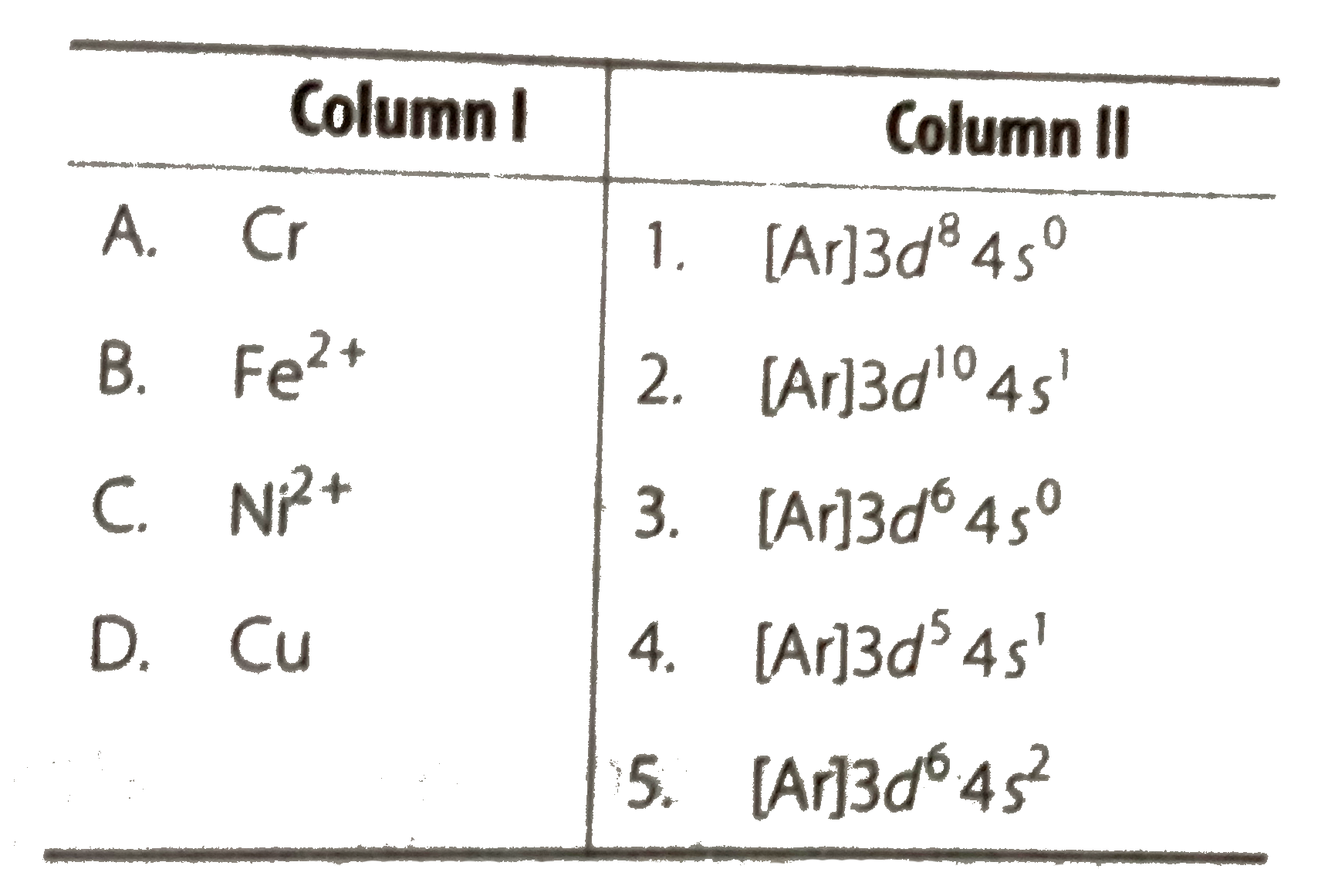 View Solution
View SolutionMatch the formulas of oxides given in Column I with the type of oxide given in Column II and mark the correct option.
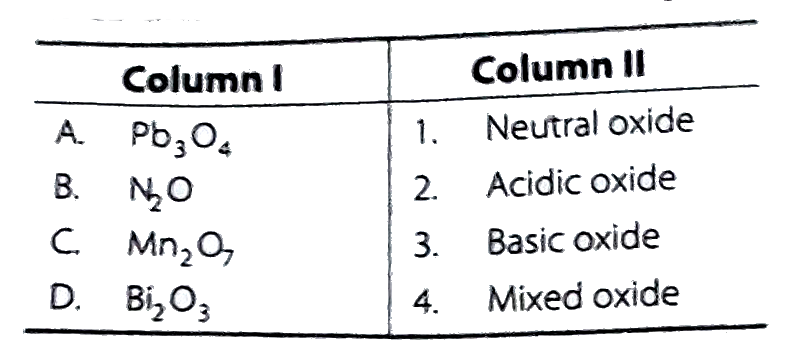 View Solution
View SolutionMatch the catalyst given in Column I with the processes given in Column II.
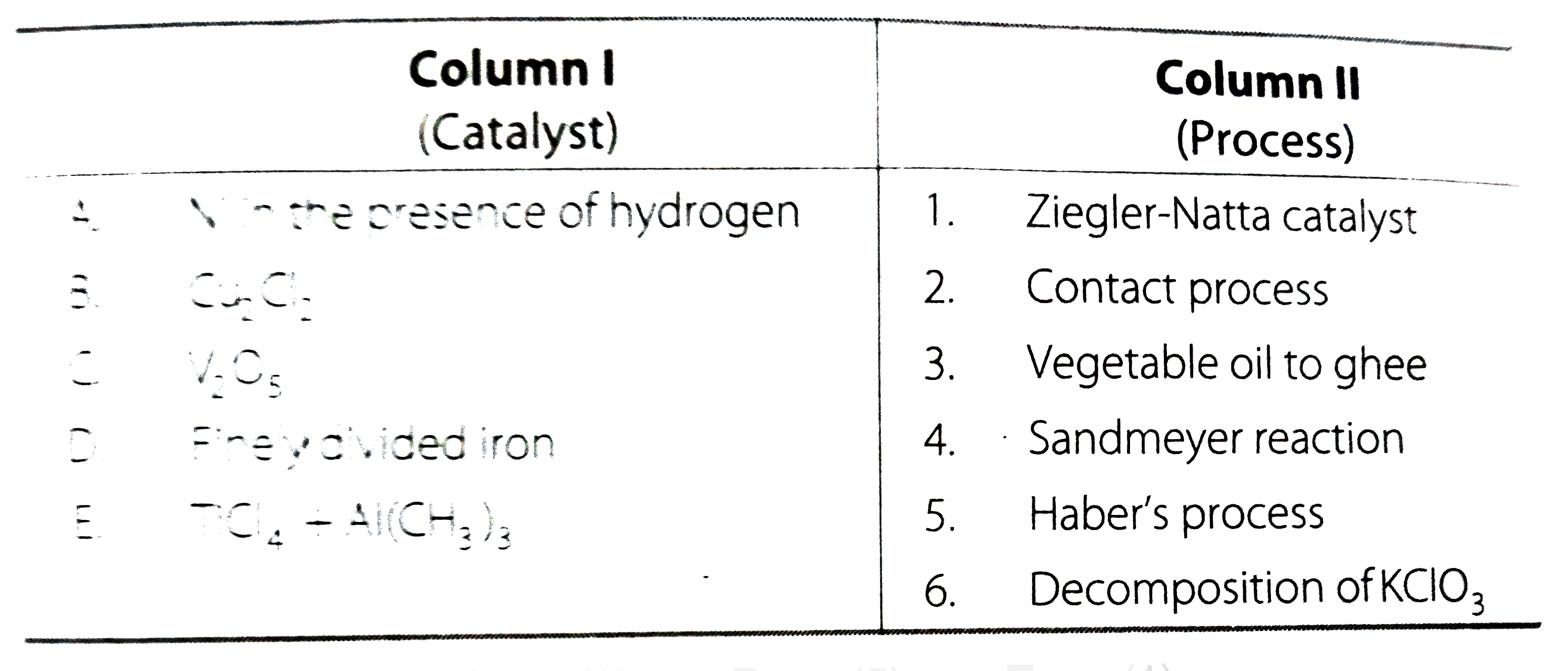 View Solution
View Solution
